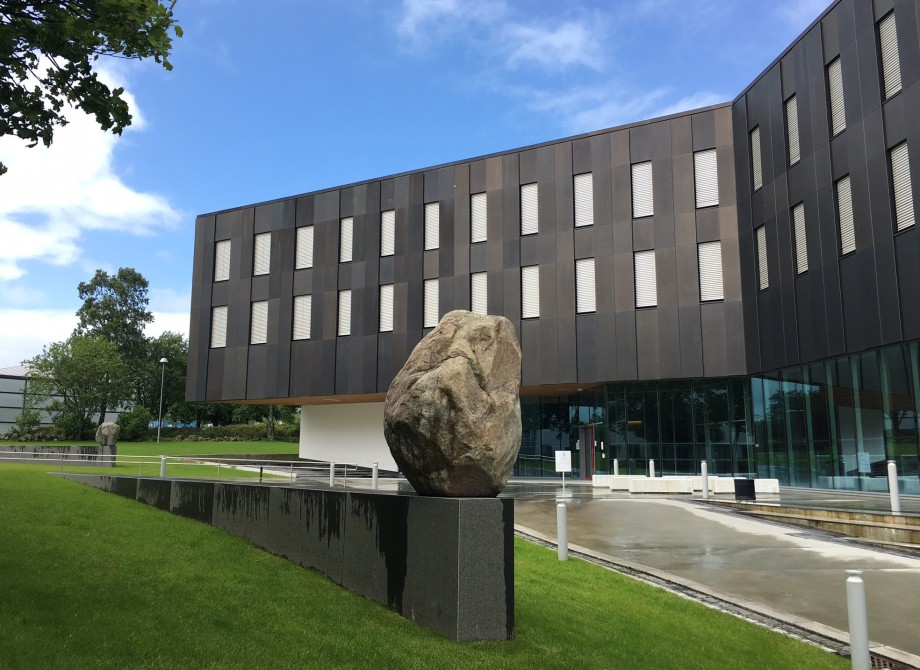A look at how the Centre for Innovation Research in Stavanger has evolved in line with rapidly changing surrounds and shifting views on innovation policy. What has the Centre learnt through the last few years?
Written by: Marte C. W. Solheim, Bjørn Terje Asheim, Ragnar Tveterås
The background and development behind the Centre
The Centre for Innovation Research (SIF) will soon enter its 15th year. In the last few years, it has been focused on the goal of creating a centre that would become world-leading both nationally and internationally within the field of innovation research, strengthening the educational prospects within entrepreneurship and innovation, and stimulating innovation and cooperation between research, industry and education in the region.
The ambition of the centre was, and still is, to be a primary contributor to the debate on practice and policy, and to be an internationally visible and recognised research environment.
The Centre was established in 2007 by the University of Stavanger (UiS) and IRIS (now NORCE: “The Norwegian Research Centre”) and was made possible through basic funding from the Gjedebo family worth NOK 50 million.

The three generations of innovation policy
Innovation policy has had various roles, directions and mandates. This is particularly evident in the work of Schot and Steinmueller (2018), which suggests that innovation policy has developed over three generations. These three generations have a different understanding of not just how innovations come about, but also how they relate to surrounding structures and frameworks that can act as drivers for, and barriers to, innovation. The first generation is based on a linear understanding of innovation, which starts with research and development (R&D) and ends with new innovations. This idea of innovation emerged around the 1940s and was the dominant philosophy up until the 1980. The main essence of it was that R&D was the primary provider of knowledge, and the role of public policy was to correct market failure. This understanding of how innovation occurs no longer has the same prominent position, and Nathan Rosenberg even stated that "everyone knows that the linear model of innovation is dead." If not dead, the Centre’s research has not been inspired by this standpoint.
However, the Centre’s research has been considerably anchored in the second generation’s innovation policy concerning the innovation system. This is based on an interactive understanding of innovation and emphasises that innovation does not exclusively come from the R&D environment, but can emerge based on the needs and/or demands in a larger system of interactive learning. This philosophy emerged in the 1990s and emphasised, to a large extent, the need for public support for networks, industrial clusters and regional innovation systems in order to stimulate innovation by promoting increased interaction, collaboration and learning. Here, the role of public policy was to correct system failures. This can be seen, for example, in the Norwegian Official Report (2014:16)5 on the restructuring of the seafood industry, which was led by Ragnar Tveterås and received substantial contributions from collaborators at the Centre. The Centre has had an overall focus on cooperation and collaboration across the public and private sectors, where one can observe that functions from tools and effects are put into system. An example of this is the project Tools for Regional Innovation (VRI), and in 2014, the Centre led one of the so-called "synthesis projects", which was designed to strengthen the research quality of the VRI programme. The leader of the project was professor Bjørn T. Asheim and it partnered with Bergen University College (now HVL: “The Western Norway University of Applied Sciences”), the University of Agder and NIFU.
The project discovered that, with one exception, Agder, there was no well-functioning regional innovation system (RIS) in Norway. But we found that strong regional industrial clusters primarily collaborated with NTNU/SINTEF in order to develop innovations. One of the conclusions of the project was that Trondheim's dominance can easily lead to lock-in tendencies and a lack of capacity for industrial changeover.
This problem was followed by a one-year project in the Research for research and innovation policy (FORINNPOL) programme in 2017–2018, where we looked at what kind of innovation policies were necessary in order to bring about radical industrial restructuring. One of the conclusions was that this could most effectively be advanced by combinations of non-related knowledge. The Centre has been/is involved in major international projects, such as RUNIN, "The Role of Universities in Innovation and Regional Development" (2016–2021), with Rune Dahl Fitjar as project manager. The aim of this project was to train future researchers to become experts in how universities can stimulate innovation and development in the regions in which they are located, as part of the universities’ third purpose. The Centre is now a partner in a corresponding EU network, POLISS – Policies for Smart Specialisation, which is coordinated from the University of Utrecht, in the Netherlands, and aims to educate future researchers who can improve the EU's smart specialisation policy.
The third generation of innovation policy aims to find solutions for the major societal challenges through research and innovations that are both responsible and sustainable, and where one also aims to change the economic system in the same direction. The state’s role in this generation's innovation policy goes beyond correcting market and system failures to also, for example, shape and create markets for new durable products and services through public procurement policies.

The Centre has had several major projects connected to innovations in the public sector, with two major research council projects led by Tatiana Iakovleva, who among other things, investigates how IT solutions can help develop responsible health and welfare services anchored in Responsible Research and Innovation (RRI).
The road forward and learnings along the way
The Centre now plays an active role in the green shift by having taken leadership in the development of a major industrial innovation project under the government's "Green Platform" programme concerning low emission value chains for mariculture at sea. The project meets the oil-related industry (Moreld, ABB, Aker) and the value chain for mariculture (Salmar, Grieg Seafood, Skretting) as strong participants and financiers. The project aims to cut greenhouse gas emissions at all stages of the value chain, as well as contribute to public regulations that are incentivised to reduce carbon footprints.
You should expect from the Centre that it is both able to provide new knowledge of high international relevance disseminated in the leading research journals, while at the same time make active contributions to practical innovation by having a role in innovation projects and through dialogues with governments and businesses. Close cooperation with regional stakeholders in the private and public sectors is a win-win solution: This provides better and more relevant research and contributes most effectively to solve concrete challenges (for example, smart specialisation and development towards a green mariculture industry). This means that the Centre should be both a critical voice when necessary, but also play ball with other societal agencies in a solution-orientated approach. And last, but not least, research-based knowledge provides the best basis for policy advice.
The Centre is ranked first in Norway within innovation research and regional development and as the best research centre at the University of Stavanger (according to SAMEVAL: “the Evaluation of the Social Sciences in Norway”). Last year, the Centre was presented with the “Institutional Ambassador Award 2020” by the Regional Studies Association.
This article was first published in Forskningspolitikk (p.18).